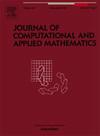Tail moments and tail joint moments for multivariate generalized hyperbolic distribution
IF 2.1
2区 数学
Q1 MATHEMATICS, APPLIED
Journal of Computational and Applied Mathematics
Pub Date : 2024-10-11
DOI:10.1016/j.cam.2024.116307
引用次数: 0
Abstract
In this paper, we investigate two novel risk measures under the weighted risk aggregation model: Tail Moment (TM) and Tail Joint Moment (TJM). These measures encompass numerous classical risk measures and are capable of quantifying higher-moment risks such as tail skewness and tail kurtosis. Considering the asymmetric and heavy-tailed properties typical of financial and insurance data, we employ the Multivariate Generalized Hyperbolic (MGH) distribution to model risk variables. Within this framework, we derive analytical expressions for the TM and TJM. These results facilitate the precise assessment of portfolio tail risk as well as the tail dependence between risk assets. Furthermore, we present two applications to highlight the benefits and robustness of TM and TJM in risk management and portfolio selection. In the first example, we utilize tail conditional skewness (TCS) and tail conditional kurtosis (TCK) to evaluate the extreme loss risks of assets, which are not typically captured by conventional risk measure such as marginal expected shortfall (MES) and tail variance (TV). In the second example, we concentrate on the dependence of risks in a downside market. Specifically, we use Tail Correlation (TCOR) and Tail Co-skewness (TCOS) to analyze the risk relationships between stocks and the market index during downturns. These risk measures provide crucial insights for portfolio tail risk assessment and hedging against downside market risk.
多元广义双曲分布的尾矩和尾联合矩
本文研究了加权风险聚合模型下的两种新型风险度量:尾矩(TM)和尾联合矩(TJM)。这些度量方法涵盖了众多经典风险度量方法,能够量化尾偏度和尾峰度等更高矩形风险。考虑到金融和保险数据典型的非对称和重尾特性,我们采用多变量广义双曲分布(MGH)来为风险变量建模。在此框架内,我们得出了 TM 和 TJM 的分析表达式。这些结果有助于精确评估投资组合的尾部风险以及风险资产之间的尾部依赖性。此外,我们还介绍了两个应用实例,以突出 TM 和 TJM 在风险管理和投资组合选择中的优势和稳健性。在第一个例子中,我们利用尾部条件偏度(TCS)和尾部条件峰度(TCK)来评估资产的极端损失风险,而边际预期亏损(MES)和尾部方差(TV)等传统风险度量通常无法捕捉到这些风险。在第二个例子中,我们主要关注下行市场中的风险依赖性。具体来说,我们使用尾部相关性(TCOR)和尾部同斜度(TCOS)来分析股票和市场指数在下跌期间的风险关系。这些风险度量为投资组合尾部风险评估和对冲市场下行风险提供了重要启示。
本文章由计算机程序翻译,如有差异,请以英文原文为准。
求助全文
约1分钟内获得全文
求助全文
来源期刊
CiteScore
5.40
自引率
4.20%
发文量
437
审稿时长
3.0 months
期刊介绍:
The Journal of Computational and Applied Mathematics publishes original papers of high scientific value in all areas of computational and applied mathematics. The main interest of the Journal is in papers that describe and analyze new computational techniques for solving scientific or engineering problems. Also the improved analysis, including the effectiveness and applicability, of existing methods and algorithms is of importance. The computational efficiency (e.g. the convergence, stability, accuracy, ...) should be proved and illustrated by nontrivial numerical examples. Papers describing only variants of existing methods, without adding significant new computational properties are not of interest.
The audience consists of: applied mathematicians, numerical analysts, computational scientists and engineers.

 求助内容:
求助内容: 应助结果提醒方式:
应助结果提醒方式:


